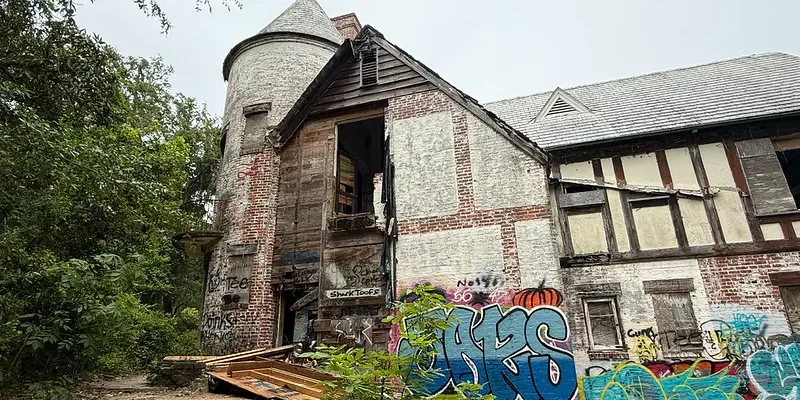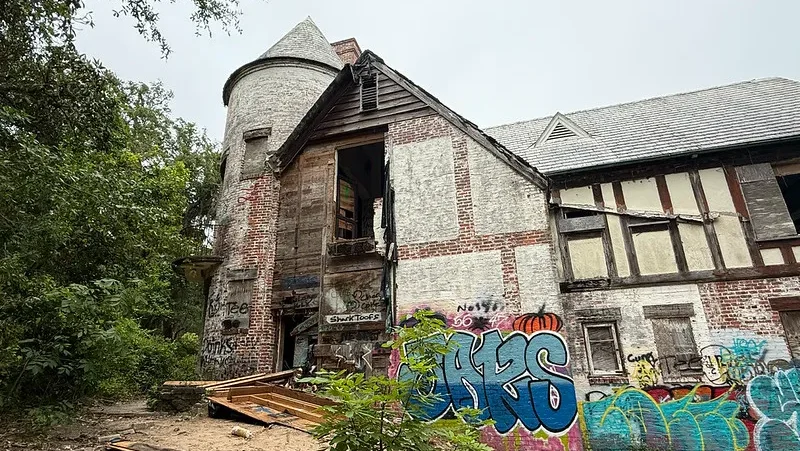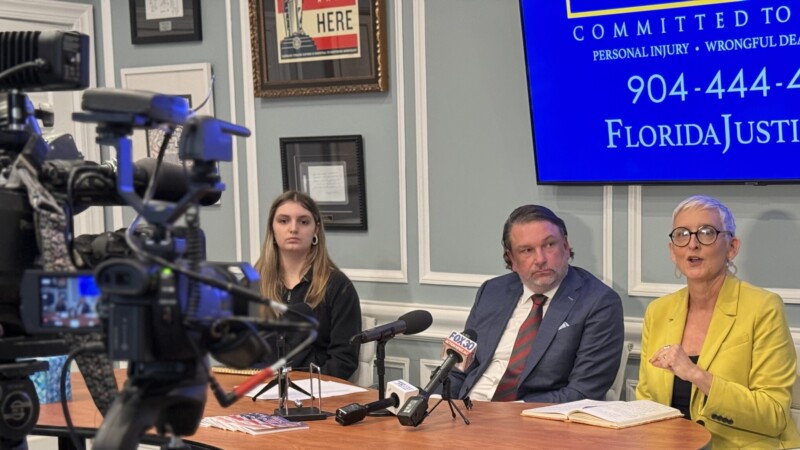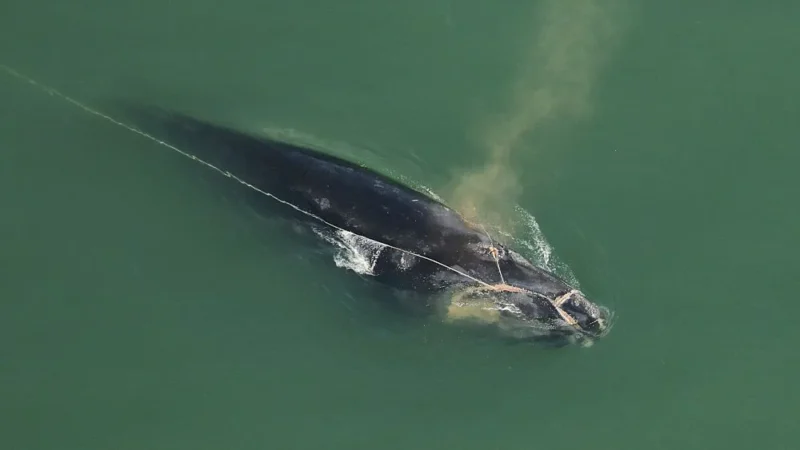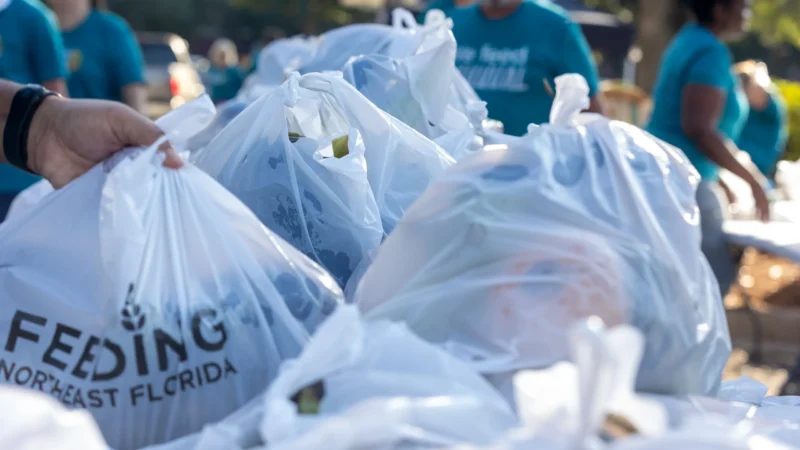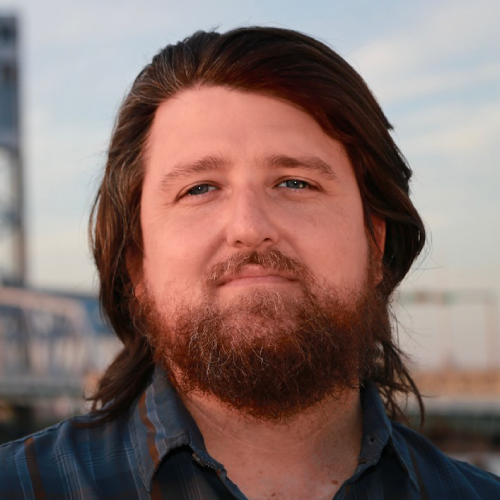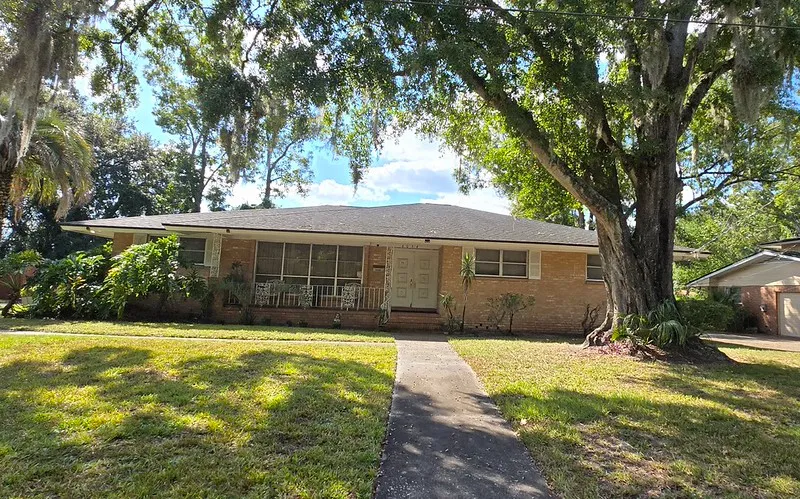
“Legend tripping” is the name for the time-honored right of passage in which teenagers and young adults journey out to spots associated with danger and creepy legends to prove themselves – or simply get scared silly. The Jacksonville area has long been home to places where young people seek out the dark unknown. From Fernandina’s Wiccademous grave to Brooklyn’s famous Devil’s School, here’s a dive into four of the most famous.
What is legend tripping?

It’s a tradition that’s as old as stories. You may have engaged in it, even if you didn’t know it at the time. You and your friends heard a story, a scary one. Perhaps there was a murder, or a ghost, or some bizarre phenomenon. That barely matters: the important thing is it didn’t happen in some remote place or the intangible realm of ghost stories and fairy tales. It happened around here. Close enough to investigate for yourselves.
So you did. Your friends psyched each other up and you went to the spot – the witch’s grave, the haunted house, the dark dirt road – where it all happened. Maybe you saw something; maybe you didn’t, but you remember the feeling, and that’s what you try to convey when you share it with the next group of pilgrims.
“Legend tripping” is the modern term for this ancient rite of passage. The term was coined by folklorist Gary Hall in his 1973 paper on “The Big Tunnel” in the aptly-named Tunnelton, Indiana, and since the phenomenon has gotten more serious study. In his book If You Should Go At Midnight: Legends and Legend Tripping in America, sociologist Jeffrey S. Debies-Carl lays out a framework for the tradition that breaks it out into three key stages.

In the “preliminal” stage, legend trippers begin by recounting frightening legends about the destination of choice. The specifics of the legends matter little – the important thing is they set the stage for the trippers to test their courage – or at least scare themselves silly. Next, in the “liminal” stage, the trippers cross the threshold into the uncanny mysteries of the space, coming into direct contact with its dangers and ambiguities as long as they can stand it. Finally, in the safety of home, the trippers engage in the “post-liminal” phase, “telling the tale” of what they experienced to weave their names into the fabric of the legend and keeping its allure alive for those who follow.
The Jacksonville area is rich in folklore, ranging from haunted places like the Kingsley Plantation and the TacoLu building to bizarre stories like the Humanzee of Orange Park and the St. Johns River Monster, so naturally, the region features many spots where teenagers test their legend tripping bonafides.
At its best, legend tripping allows the young to put their courage to the test in a place where there’s not much risk of hurting themselves. But the tradition can have serious negative effects on the spaces involved, with vandalism, theft and property damage taking a toll even on places of such high import to generations of Jaxsons.
Here are four magnets for local legend trippers:
St. Johns: The erstwhile Ghost Light Road

One of the most famous of the First Coast’s legend tripping hotspots is unfortunately a thing of the past: the Ghost Light Road. Before the cookie cutter subdivisions subsumed northern St. Johns County like so many air potato vines, Greenbriar Road was an unpaved cut-through connecting State Road 13 to County Road 210 that likely saw more feral hogs than cars. But each night from at least the 1960s until 2001, it became a legend-tripping expressway, as pilgrims could be sure to encounter a marvel: the Ghost Light, a lone spectral headlight that seemed to draw near and nearer before suddenly blinking out of sight.
Ghost Light Road was one of my first serious legend tripping experiences, and unlike many of the following stories of ghosts, I can confirm that it was very real. I first visited the eerie light in 1997 in my 1984 Buick Riviera alongside my friend Jeff Lang, a then-recent refugee to the St. Johns exurbs from Duval County. We returned several further times, at least a few times without intoxicating substances involved, before the phenomenon vanished for good in 2001.

Like any good haunted place, Ghost Light Road had an explanatory legend. According to the version Jeff told me, the ghost was a young motorcyclist whose father had warned him about speeding on the dirt road. One day, the young man’s brother strung a rope across Greenbriar. This prank merely would have unseated the cocky rider had he heeded his father’s admonition, but tragically he gunned the engine and lost his head. Thereafter, his ghost shined his headlamp down Greenbriar in a nightly vigil.
The story is apocryphal; in legend tripping situations, verity and consistency always take a back seat to a story’s ability to set the mood. But as a real phenomenon, the Ghost Light Road drew more attempts than most legend tripping locales to discover the real source of the light. Non-ghostly explanations have included swamp gas, UFOs and signals for drugrunners. More likely, it was an optical illusion caused by an unusual bend in CR-210 at the Greenbriar intersection, in which cars on 210 appeared to be coming up Greenbriar head-on before curving through the bend and seeming to disappear behind the trees.
Support for the latter theory comes from the fact that after the road was reworked in 2001, the Ghost Light was never seen again. The ghost story and haunted reputation have outlived the site itself, and continue to be shared long after the light itself shined its last.
Fernandina: Wiccademous Grave

Another of the First Coast’s popular legend tripping destinations is located on Amelia Island, known as the Wiccademous grave or simply the “witch’s grave”. For decades, local teenagers have trekked to this strip of woods across from Fernandina Beach High School that have had a reputation for strange happenings since at least the 1970s.
Early legends about the woods apparently didn’t involve a witch; the original draw was “Shaky Ground,” a spot where it was said that the earth would quake beneath a visitor’s feet. Some locals attributed this to an old underground drainpipe, while others preferred a supernatural explanation. Eventually, a story emerged that the rumbling was caused by Wiccademous, the angry, improbably-named spirit of a girl executed for witchcraft in the 17th century and buried beneath an oak tree. This farrago of witchy tropes exploded in popularity after it first appeared online in 2002, becoming cemented in local folklore.
It’s easy to see why these woods became such a destination for legend tripping: owned by the Nassau County school district, it remained undeveloped for decades even as development overtook much of the rest of Amelia Island, and being directly across the street from Fernandina Beach High School, it was highly visible to the prime legend tripping demographic. In 2019, the land was controversially sold off for a new subdivision, leaving only a small section of the woods north of Jasmine Street along Egans Creek still standing. Still, undeterred teenagers trek to what’s left of the woods in hope of encountering Wiccademous.
Fort George Island: Neff House


Though its status as a legend tripping destination is relatively new, the house is very old. This Tudor Revival-style structure with a distinctive tower was built in 1926 by Horace Clark Greeley, “the dean of Jacksonville architects”, as a winter home for Chicago businessman Nettleton Neff. The Neff family never got to use it, however, as Neff’s wife died in a tragic fire before it was completed, and their son committed suicide two years later. Nettleton Neff himself took his own life in 1931 having never visited his winter home.
The Neff originally house entered Jacksonville folklore after strange events took place there involving the Betz family, who purchased it in 1967. In 1974, Gerri and Antoine Betz were walking in the woods with their son Terry after a fire. Terry found a strange metallic sphere, about the size of a bowling ball, and took it home.

Thinking it odd enough to make a good souvenir, Terry, then a 21-year old pre-med student, took the ball home. Soon it started displaying unusual properties – it would roll around seemingly on its own volition, changing directions and halting abruptly. It would also hum back when Terry played his electric guitar near it, and emitted a high-pitched sound that would send dogs whining and covering their ears. The “Betz sphere,” also called the “mystery sphere” or simply the “Odd Ball,” started attracting international attention. It was studied by the US Navy and a panel of ufologists, but no one could identify what the sphere was. Tired of the constant attention, the Betz family simply stopped talking about the sphere, leaving a tantalizing unsolved mystery still talked about more than 50 years later.


Gerri Betz sold the Neff house in the 1980s and it was acquired by the Florida Park Service. The property became part of the Timucuan Preserve, with the house being used for a ranger residence and office space. In the 21st century the house fell into disrepair and was largely abandoned. At this time, this unusual, inaccessible structure started to draw in legend trippers. The Neff House is an example of a structure that has felt the negative effects of legend tripping, with broken windows and doors exposing it to the elements and graffiti on every surface. The old house now sits alone in the woods of the preserve, awaiting its next fate.
Brooklyn: Annie Lytle Elementary School, “The Devil’s School”

Annie Lytle Elementary School, also known as Public School Number 4, has a reputation as the “most haunted building in Jacksonville” and as the notorious “Devil’s School.” And more than any other place, it’s the premier legend tripping destination in Northeast Florida.
Built as the neighborhood elementary school for white students in Riverside and Brooklyn, the current building dates to 1917. Originally called Riverside Grammar School, it was named after its longtime principal Annie Lytle Housh in 1950. The aging school’s ending was hastened by the construction of what became Interstate 95, which was built right past its door, cutting it off from its neighborhood and serving as a Jim Crow-era barrier between mostly Black Brooklyn and white Riverside. In 1960, Annie Lytle Elementary’s bells rang for the final time. The building served as school district offices and storage until 1971, and it’s sat vacant ever since.

While the incursion of I-95 sped on Annie Lytle Elementary’s closure, it’s also in one key way responsible for its long afterlife: proximity to the highway ensures the school’s ruins are seen by thousands every day. For young Jaxsons, the formidable edifice is perennially foreboding yet highly visible, firing many a youthful imagination – and ensuring that well-placed graffiti will draw countless eyes. Soon after it shuttered, the old schoolhouse emerged as Jacksonville’s legend-tripping spot par excellence.
In keeping with all legend-tripping spots, Annie Lytle Elementary acquired several especially memorable, if totally specious, legends. Most commonly, the building is said to be haunted by schoolchildren killed in a boiler explosion or, more outrageously, by a psychotic janitor or cannibal principal. Inspired by contemporary hysteria over satanic cults, in the 1990s the school also came to be seen as a site of devil worship. By the time I first visited in 1999, devilry had become an indelible part of the lore, with the ruin becoming known as the “Devil’s School.”

Unfortunately, as with the Neff House, all this attention from legend tripping has taken a toll on the structure. Years of vandalism, break-ins and fires have left it in a rough state. A series of failed redevelopment plans since the 1970s haven’t helped matters, and a complicated series of property transfers has left the building under a separate ownership than the surrounding land.
Fortunately, this story ends on a hopeful, if inconclusive note. In the 2000s, a group of do-gooders entered the scene – and offered a way to explore the structure while helping preserve it. The Annie Lytle Preservation Group has taken it upon themselves to maintain the property, clean off graffiti – and keep the trespassers at bay. Annie Lytle Elementary School’s future is in flux, but thanks to their efforts, it still stands, awaiting its chance at the renewal now sweeping Brooklyn.

